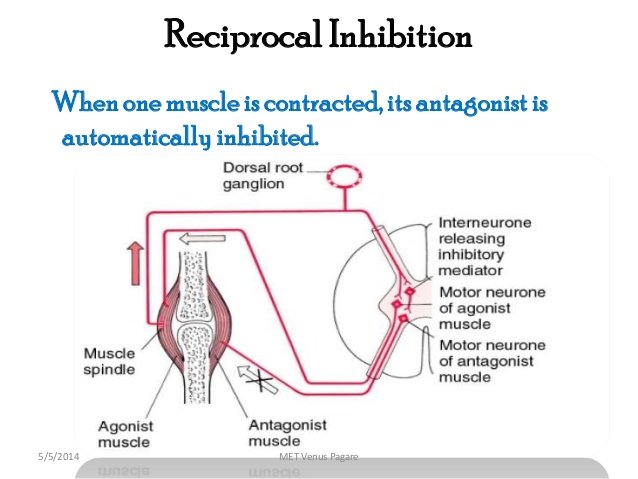What is Contract-Relax Stretching?
What is Contract-Relax Stretching?
Contract-relax stretching is a form of PNF stretching. PNF stands for proprioceptive neuromuscular facilitation. What does that mean? It means that it uses natural reflexes to further the stretching response. In contract-relax stretching, you must first isometrically contract the opposite muscle. Then after contracting, try to further stretch the intended target. For example, If trying to stretch the biceps: you would isometrically contract the triceps (opposite the biceps) for 10 seconds. Then, you would relax the triceps and try to further stretch the biceps by straightening the arm. This kind of stretching can be performed on any muscle with an antagonist (or muscle that performs its opposite motion)
What is the neurophysiology behind contract-relax stretching?
Contract-relax stretching uses one of the simplest reflexes in the human body to give you a deeper stretch. Remember: reflexes are subconscious, so your mind doesn’t have to work to make this happen, its just a natural occurence. The physiological phenomenon behind contract-relax stretching is reciprocal inhibition. Your body knows that when a muscle on one-side of the joint is contracting (shortening) the other side of the joint needs to relax (lengthen) to allow this motion to occur. This is known as reciprocal inhibition.
lets use an example to explain this; lets pretend we are stretching the hamstring:
In contract-relax stretching, you would contract the quadriceps muscle before stretching the hamstring muscle. In this case, the quadricep would contract making the muscle spindle send a signal to the body. This signal reaches the spinal cord and sends two signals back out to the body:
- One signal comes right back to the muscle that sent it (the quadriceps), and says “keep on shortening and getting tighter!” This is sent by an alpha motor neuron.
- The other signal goes to the opposing muscle (the hamstrings in this case) and says “Relax! the other side needs to get shorter!” This signal comes from an inhibitory interneuron connecting to the alpha motor neuron of the hamstring.Therefore, this inhibitory interneuron is Inhibiting the hamstring from contracting.This in turn makes it fully relaxed.
So then, when the quadricep muscle finishes contracting, and we suddenly go into a a deeper hamstring stretch, the hamstring muscle is more relaxed than before and can allow for more motion!
In the picture below the agonist muscle= quadricep. The antagonist muscle= hamstrings.
How does this differ from static stretching?
Contract-relax stretching differs from static stretching in a few ways, but neurologically in one fundamental way. Static stretching relies on the GTO, not the muscle spindle as the signal messenger. The GTO. triggered by tension, has the opposite response of the muscle spindle. The GTO inhibits the agonist muscles contraction and allows the antagonist muscle to contract more. In the example above, this means that if we contracted the quads, it would turn off the quads, and make the hamstrings turn on and start contracting. This is known as autogenic inhibition rather than the reciprocal inhibition used in contract-relax stretching. This GTO response kicks in after about 7-10 seconds when muscle tension has begun to increase in the muscle being stretched.
Is contract-relax stretching better or worse than static stretching?
There is lots of research out there showing the great short-term benefits of contract-relax stretches. One research study that showed 7 days of contract-relax stretching to the neck resulted in large increases in range of motion, but the effects quickly dwindled when the stretching was discontinued. While there is no denying that contract-relax stretching is effective, it may not be so clear as to whether or not it is that much more effective than static stretching. One study compared static stretching to contract-relax stretching with variable and controlled angles. The results show that with controlled angles, there was no difference between the two methods. But, when allowed to push to the point of pain in range of motion, that contract-relax stretching had larger joint angles. Even with larger joint angles (aka bigger ranges of motion), the EMG responses (or muscle activity) was not different between the two methods.
Conclusion
We are here to help! At Symmetry, we will provide you with a physical therapy assessment to get to the root cause of your pain. Check out our Youtube channel for more tips and easy to follow exercises videos.


https://waterfallmagazine.com
Great beat ! I wish to apprentice while you amend your website, how can i subscribe for a
weblog website? The account aided me a acceptable deal.
I had been tiny bit familiar of this your broadcast provided vivid clear idea